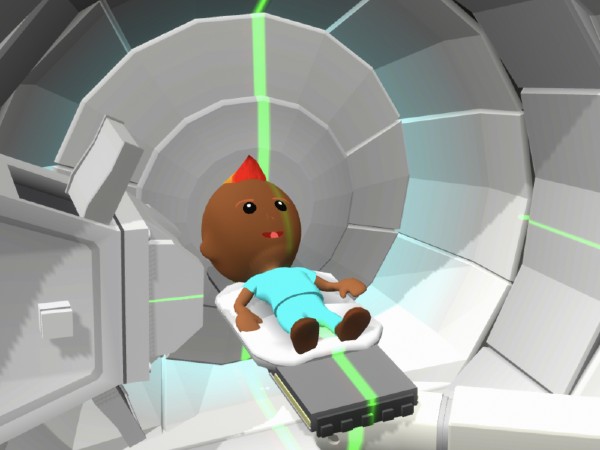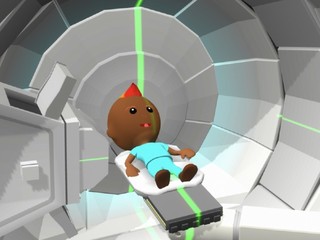 Pediatrics is a space that doesn’t see much venture funding: in the first three quarters of 2023, digital health startups addressing pediatric health raised $413.6 million across 20 deals, or just 4.7% of overall sector funding. And that’s an increase from previous years: from 2011 to 2019 the space saw an average of 1.7% of annual digital health funding.
Pediatrics is a space that doesn’t see much venture funding: in the first three quarters of 2023, digital health startups addressing pediatric health raised $413.6 million across 20 deals, or just 4.7% of overall sector funding. And that’s an increase from previous years: from 2011 to 2019 the space saw an average of 1.7% of annual digital health funding.
Even then, many of the companies that raised funding don’t have a focus on pediatrics, but have it as part of their overall strategy, such as such as K Health, Headspace, Lyra Health, and Maven.
One company that has made young patients its focus is Xploro, which announced a $1.7 million seed round this week, led by Boomerang Ventures.
Established in the UK in 2019, and relocated to Cleveland, Ohio in 2022, Xploro came about after the daughter of Dominic Raban, the company’s co-founder and CEO, was diagnosed at age 13 with Ewing’s Sarcoma.
The platform uses augmented reality, gaming, and AI to offer health information, to engage and inform young patients, with the aim of reducing stress, improving health literacy, and enhancing outcomes. The platform is available in multiple languages and includes solutions for oncology, needles and injections, and radiology, among others.
The company collaborates with organizations like World Child Cancer and partners with healthcare providers such as Cincinnati Children’s Hospital, University Hospitals Cleveland, and several NHS Trusts.
The company plans to use the new investment to expand into new treatment areas, enhance sales and customer success functions, while securing runway through 2025, including broadening health condition coverage and involving third-party content creators.
Josh Nickols, PhD, Venture Partner at Boomerang Ventures, spoke to VatorNews about Xpoloro, why they chose to invest, andy the firm’s vision for healthcare.
VatorNews: Has pediatrics been keeping up in terms of innovation with other digital health spaces? What are some of the barriers specific to this subsector?
Josh Nickols: Across pediatrics, innovation has historically lagged behind new treatments for the adult patient population. The market for medical technologies is just so much greater elsewhere. In fact, the majority of medical devices and therapeutics are used off-label and just scaled down to a smaller person, but that’s doesn’t work well in all situations.
Just as therapeutics and devices don’t always work the same for smaller, younger people, pediatric patients don’t behave like adult patients and that can create challenges to innovation. FDA takes a particularly rigorous approach to safety in pediatrics, and that can make finding patients for trials tough, or testing new medicines. It’s an absolute principle of FDA to safeguard pediatric patients, and it is always a struggle to figure out the right balance of safety vs new technologies that improve the human condition.
VN: What’s different about Xploro’s solution? How are they innovative?
JN: Xploro believes that wellness, better outcomes and improvements to patient care must include educating patients and reducing their anxiety. All patients – adults included – are frequently anxious or scared by unfamiliar medical procedures. Xploro takes the approach that providing engaging tutorials and techniques, children can anticipate what will happen when they are seen in a healthcare setting. Not many of us are okay with needle sticks but a bit more information about the where, what, and why can make procedures easier. Tough medical procedures cannot be sugar coated but, with information and bit less anxiety we might not need repeated attempts to draw blood, or extended MRI imaging because a patient couldn’t hold still.
Xploro doesn’t require FDA approval and so deploying their technologies is faster. The company’s developers have also taken the time to understand and model messaging that works well for pediatric patients. Did they actually comprehend what happens when chemotherapy is administered, or who a nurse practitioner is, and what they will be doing in the Emergency Room.
VN: If you can, walk me through how a typical patient interacts with Xploro’s platform. What are some of the typical use cases?
JN: The company is rapidly developing modules for a variety of conditions and procedures, but blood draw is a good starting place. After a short registration, the patient learns who is on their care team, and modules are loaded that explain the procedures they may receive.
It is then explained that a short needle with tabs – hence butterfly – is used together with a small flexible tube to draw blood from a patient’s arm. A spray or gel can be applied that numbs the area beforehand. The module then goes on to say, doctors and nurses use the drawn blood to check for health cells, the amount of different parts of the blood, and maybe chemicals that shouldn’t be there.
VN: Has the company been able to show any ROI so far?
JN: Yes. The company has participated in trials, and has ongoing studies that show significant reductions in procedure time, repeated attempts required, and improvements to the way patients feel.
VN: How many organizations and health systems does Xploro currently work with and how many patients is it reaching?
JN: Xploro has nearly a dozen top-tier major, pediatric hospitals with the platform in use, and across areas like the ER, sedation/imaging, transplant and oncology. Each new deployment grows both the number of patients reached and expands the mission of the company.
VN: What was it about Xploro that made you want to invest in them? What did you see in the team or the technology that set them apart?
JN: We were drawn to the vision. The founders have all been touched by healthcare experiences that made it obvious to them that more needed to be done to reduce stress and anxiety, particularly among pediatric patients. Second, the team has embraced a creative approach to its products which align well with children who have big imaginations and lots of curiosity.
Sometimes you just know it when you see it, and the partners at Boomerang knew that Xploro was special before we could put words as to why. I think we felt that it resonated with our own personal experiences as parents or siblings and our own healthcare stories.
VN: What is your vision for the future of healthcare and where does a company like Xploro fit into that ecosystem?
JN: Our vision for healthcare is that it is not just episodic. Healthcare is shifting to a wholistic design and patients aren’t just seen in the hospital and then it’s over. We know that care must extend to the home, and throughout a patient’s day/life. That may mean technologies that work from the home and convey actionable information to clinicians, improve everyday living and health, or improve preparation and post-procedural outcomes. Xploro’s platform is positioned to support all of these fronts.
VN: Is there anything else that I should know?
JN: Xploro is initially focused on top academic, pediatric medical centers, but this is really just a proving ground. The company is learning a lot, deploying a lot, and the opportunities to help pediatric patients extend widely to smaller community hospitals, immediate care centers and clinics. The company also believes that approaches taken to improve the experience for children can do the same for adults. We love that this time it’s a pediatric technology positioned to help adult patients too.
(Image source: xploro.health)















